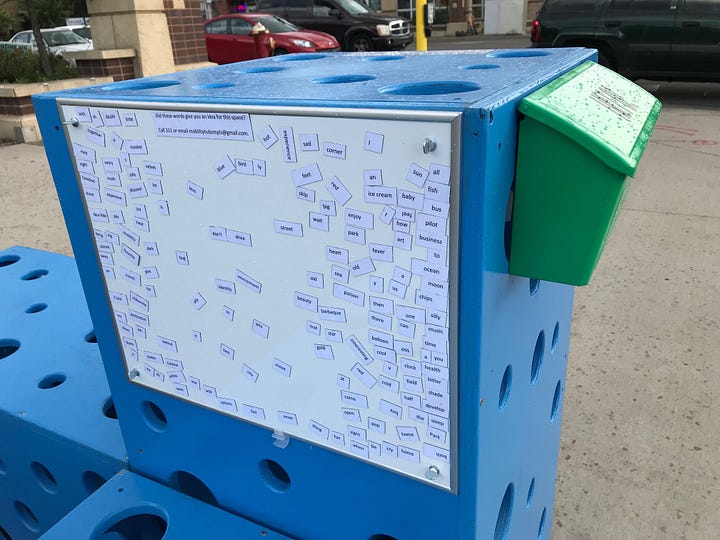From Exclusion to Participation: Inviting User-Driven Change to Shared Spaces
Replacing a philosophy of "control" with "invitation" in order to create shared ownership and care. Part 7 in our series on Engagement and Accountability.


Have you ever visited a space that was supposedly for the public to use but made you feel completely unwelcome? I know I have. Common features of such spaces are:
The inability for a visitor to adjust the environment to fit their needs;
Bolted down benches;
Locked doors;
Features designed to be “hose-down-able” rather than comfortable;
Signage focused on telling you what you can’t do;
An irrational fear of theft, or wear and tear, no matter how small the item.
The message given by all these features is: we don’t really want you here. And, if you are here, we (the owners/managers) are focused on controlling your behavior, not facilitating enjoyment.
So often, the people who use a shared space most are actively prevented from having a part in shaping it themselves by those with formal authority over the space. Users are not only excluded from being involved in planning processes, they are often de-incentivized from touching, moving, or effecting anything within the space itself.
Control vs. Invitation
It’s usually difficult to find the person who is in charge of such exclusionary spaces, that doesn’t merely pass the buck. Here is the core issue: by having those who can make the big decisions far from the space, they, in turn, rely on agents (employees or contractors) to handle things on the ground. The greater use of agents opens up the risk of imbalanced incentives. Those charged with the ongoing care of public and shared spaces under absentee authority are almost always incentivized to reduce negative events, with no reward for making good things happen.
Focusing only on preventing negative events makes one overly focused on control rather than on creation. The less that happens, the better. Everyone looks like a potential problem if you’re focused on preventing actions rather than creating experiences for users.
To control is to stifle, and a space cannot be successful over the long term - for anyone involved - if operated in this way.
The remedy here is invitation.
True Invitation: From Users to Participants
Our remedy for the trap of exclusion is to foster real participation, by creating rules and guidelines which allow those who care about a place to do small, good things with little to no formal approval needed.
If people are encouraged to make small changes to a space - such as moving a piece of furniture to find the shade, manipulating play equipment, or creating a small poem on a magnet board while they wait for the bus - they are going to feel a greater ownership over that space, and thus, be more interested in taking care of it. They will be more likely to care for the wellbeing of the space, and feel that they belong there.
To take it one step further would be to incorporate participation into the larger-scale shaping of the space - not merely through formal feedback channels, but through more meaningful and direct avenues, such as providing funding and staff resources for:
Community gardens;
Participant-led programming;
Simple building construction and repair;
And, two of my favorite examples from my time in Berlin:
Adventure playgrounds;
Youth farms.


The possibilities are endless when those who use a place the most become participants in that place’s shaping.

